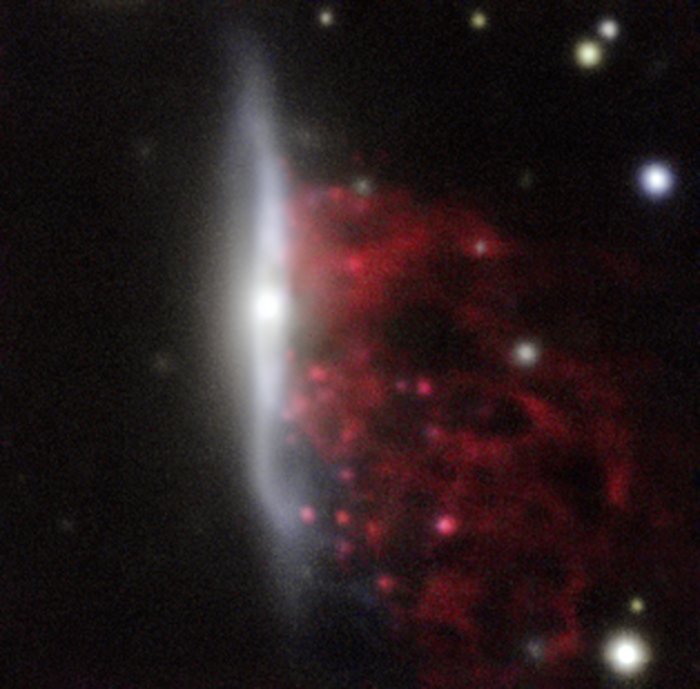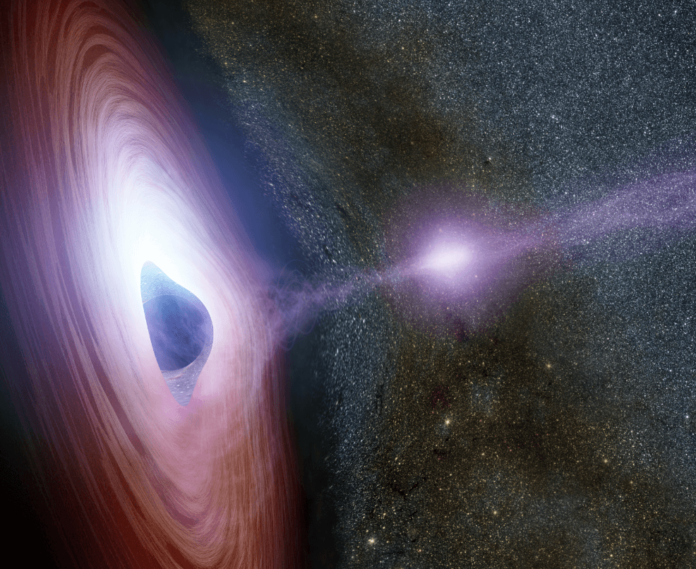It’s an exciting month for astronomers at ESO’s Paranal Observatory in Chile as they discover a new way in which supermassive black holes are fed, and that’s by so-called “jellyfish galaxies”. So far to date, around 400 jellyfish galaxies have been found. They’ve been nicknamed this because of the way the mechanism produces tentacles of gas and newborn stars. The tentacles allow gas to travel to the central regions of the galaxies, acting as a kind of feeder of the black hole.

Credit: ESO/GASP collaboration
The team that made the observation used the MUSE (Multi-Unit Spectroscopic Explorer) instrument on the Very Large Telescope (VLT) at the Paranal Observatory in which to do it. They decided to focus on the extreme examples of these “jellyfish galaxies” and discovered that the tentacles of these galaxies extend for thousands of light years and are actually produced through a process called ram pressure stripping. Because of their mutual gravitational attraction, galaxies and galaxy clusters collide at high speeds, creating a hot, dense gas that creates starbursts within the galaxy’s disc.
Of the seven jellyfish galaxies they studied, six of them were found to have a supermassive black hole at the center that was being fed by the surrounding gas. Team leader from the INAF-Astronomical Observatory of Padova in Italy, Bianca Poggianti, said, “This strong link between ram pressure stripping and active black holes was not predicted and has never been reported before. It seems that the central black hole is being fed because some of the gas, rather than being removed, reaches the galaxy center.”
The results from the study provide us with a new insight into how these supermassive black holes are fed. “These MUSE observations suggest a novel mechanism for gas to be funneled towards the black hole’s neighborhood. This result is important because it provides a new piece of the puzzle of the poorly understood connections between supermassive black holes and their host galaxies.” What the researchers have discovered is just a small part of a larger scale observation involving many more jellyfish galaxies. When completed it will reveal a lot more about these gas-rich galaxies, how they first formed, and provide us with a key to understanding galaxy evolution as a whole.
More News to Read
- New Hydrogel Material Could Help Tissue Repair After Stroke
- New Bacterium Discovered That Can Nucleate Ice
- Does the Answer to Better Patient Care Lie in Machine Learning?
- MAG-LEV Audio: Futuristic Technology Meets an old Format
- New Grant Allocated to Imperial College Professor to Research Incurable Lung Disease

